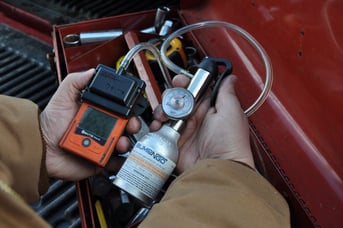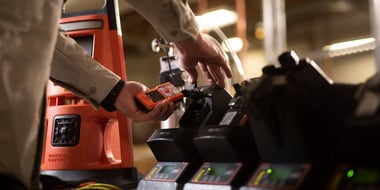COVID-19 has changed our lives dramatically, forcing all of us to make personal and professional changes. One of these changes has been physical distancing and reducing human contact. Many companies have adopted measures like reducing the work force, staggering shifts, rotating staff, and implementing site induction programs (in and out checklists, temperature checks, etc). Unfortunately, some companies experience difficulties with these protective measures because workers frequently need to share spaces, equipment, tools, and more. EHS professionals, operations managers, and safety leaders have been tackling these challenges to find safe and creative ways to adapt their workplaces to this “new normal.”
One thing you can’t afford to change is providing workers with lifesaving gas detection equipment. This can be challenging under normal operations, becoming even more difficult while we weather COVID-19. The challenges in adapting a gas detection program to COVID-19 are twofold: if you have fewer workers on site, you may not have the resources and expertise to maintain your gas detector fleet and when workers use gas detectors, they typically have physical contact with other workers and shared spaces at your site.
It’s rare for workers to have their own dedicated personal gas detectors—instead, peers working different shifts may share one gas detector. This means workers need to visit a shared office or maintenance site multiple times a day to pick up and return their gas detectors. While doing this, your worker likely is in contact with maintenance technicians or other peers while they manually charge, bump test, calibrate, and upload data logs from the monitor. On the other hand, if you have fewer staff on site, your worker might not have access to a trained maintenance technician who can diagnose and fix an issue with a monitor. This not only causes downtime, but also puts your people at risk of using a monitor that might not work, or worse, trying to do their job without one.
Reduce Human Contact and Improve Maintenance Efficiency
Luckily, there are two easy ways to reduce the amount of time your workers spend in shared spaces for their gas detection needs: docking stations and subscription-based service programs.
Docking stations drastically reduce the amount of time your workers spend in close contact by simplifying daily gas detector maintenance like bump tests, charging, and data logging. With docking stations, your workers place their monitor on the dock after their shift and it will automatically initiate basic maintenance tasks. The next day, your worker simply picks up the monitor from the dock and gets to work—no fumbling with multiple gas cylinders and tubing as they calibrate. A process that would have taken 10 or so minutes with a manual process now takes just seconds. For shared monitors, the docking station is an ideal location to implement cleaning and disinfecting procedures.
While docking stations are ideal to reduce human contact for day-to-day maintenance tasks, gas detection subscription services take safety a step further by covering troubleshooting and repair. Gas detection subscription programs like iNet® are helpful under normal operations and are especially helpful right now if you have reduced staffing or are limiting visitors (including on-site repair services) due to COVID-19 restrictions. With a full-service, subscription-based program like iNet, a docking station reviews the performance of your monitors, sensors, circuit boards, microprocessor, and pumps each time your workers dock their monitors. We’ll tell you whether a monitor needs to be replaced—before it fails—and we’ll automatically send you a new one. Before you know it, you have contactless delivery of a new monitor at no charge. Your workers can spend less time crowded in a maintenance room and more time working at a safe distance, knowing their monitors will be ready to alert them if gas hazards pose a safety risk.
When the threat of COVID-19 eventually passes and your site returns to full operating capacity, iNet gives you total flexibility to scale your gas detection program. Whether you need to add more monitors, change the gases you monitor, or adapt in some other way, iNet allows you to quickly and easily shift your program to keep your workers safe.



